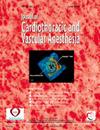A Call for Diversity: Underrepresented Minorities and Cardiothoracic Anesthesiology Professional Development
IF 2.3
4区 医学
Q2 ANESTHESIOLOGY
Journal of cardiothoracic and vascular anesthesia
Pub Date : 2025-03-01
DOI:10.1053/j.jvca.2024.11.021
引用次数: 0
Abstract
The presence of underrepresented minorities (URMs) in cardiothoracic anesthesiology is underwhelming, and progress toward diversity has been slow at best. Despite decades of efforts, change seems hard to achieve. For example, it took more than 30 years for women to make up 50% of medical school matriculants. However, women continue to be underrepresented in our professional subspecialty and notably. This slow movement is not idiosyncratic to women but also applies to equity related to race and ethnicity. Given this current state, this article seeks to bring attention to the lack of diversity in cardiac anesthesiology and is a call to action to accelerate efforts and the pace of change toward greater equity both in our field and in medicine in general. This piece is the final part of a 4-part series exploring opportunities for improving diversity in cardiac anesthesiology. The authors focus specifically on the professional experience of URMs in medicine in our subspecialty and the opportunities for improving diversity. While many barriers for URM physicians reflect those of women, the experience of URM practicing physicians is unique and solutions need to incorporate.
呼吁多样性:未被充分代表的少数民族与心胸麻醉学专业发展。
在心胸麻醉学中,代表性不足的少数族裔(urm)的存在并不令人印象深刻,多元化的进展充其量是缓慢的。尽管几十年的努力,改变似乎很难实现。例如,女性花了30多年的时间才占到医学院新生的50%。然而,在我们的专业亚专业中,女性的代表性仍然不足。这种缓慢的变化不仅限于女性,也适用于与种族和民族有关的平等。鉴于目前的状况,本文旨在引起人们对心脏麻醉学缺乏多样性的关注,并呼吁采取行动,加快努力和变革的步伐,使我们的领域和医学领域更加公平。本文是探索改善心脏麻醉学多样性的机会的四部分系列文章的最后一部分。作者特别关注我们亚专业urm在医学方面的专业经验和改善多样性的机会。虽然URM医生的许多障碍反映了女性的障碍,但URM执业医生的经验是独特的,解决方案需要纳入。
本文章由计算机程序翻译,如有差异,请以英文原文为准。
求助全文
约1分钟内获得全文
求助全文
来源期刊
CiteScore
4.80
自引率
17.90%
发文量
606
审稿时长
37 days
期刊介绍:
The Journal of Cardiothoracic and Vascular Anesthesia is primarily aimed at anesthesiologists who deal with patients undergoing cardiac, thoracic or vascular surgical procedures. JCVA features a multidisciplinary approach, with contributions from cardiac, vascular and thoracic surgeons, cardiologists, and other related specialists. Emphasis is placed on rapid publication of clinically relevant material.

 求助内容:
求助内容: 应助结果提醒方式:
应助结果提醒方式:


